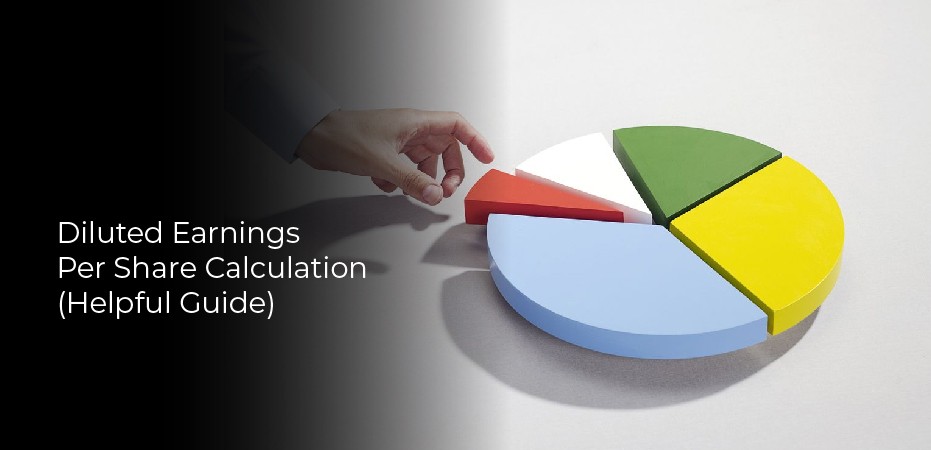Diluted earnings per share (EPS) is a calculation used to determine the value of a company’s stock. It uses a number of assumptions to calculate the number of diluted shares. For example, dilutive options and warrants are assumed to be exercised at their exercise price. And proceeds are converted into total shares purchased. The difference between the total number of shares assumed to have been issued. And the number of shares purchased is used to calculate the diluted EPS.
What Do You Mean by the Calculation of Diluted Earnings?
Calculating diluted earnings per share (EPS) is a process that involves adjusting the company’s net income by subtracting preferred dividends from it. Divide this amount by the number of shares outstanding, and you get the diluted EPS. Additionally, diluted EPS must be adjusted for potential dilutive common stock.
Diluted EPS differs from basic EPS in that it considers the dilutive effect of stock options, restricted stock, and stock units. In addition, this calculation also includes the treasury stock method, which assumes that the proceeds of option tranches are used to buy back common shares at current share prices.
In addition to common shares, diluted earnings per share may include convertible securities and related debt. If we talk about these cases, the company must calculate the number of potential shares based on the best conversion rate.
The income statement also contains information about the number of convertible securities outstanding, which include all outstanding warrants, equity options, convertible debts, and convertible preferred shares.
Facts of Exclusion of Potential Dilution of EPS
Diluted earnings per share (EPS) is a measurement of a company’s profit or loss per share adjusted for the effects of dilutive securities. These securities can reduce a company’s earnings per share by increasing the number of ordinary shares it issues, thereby diluting EPS. However, anti-dilutive securities are not counted, so the dilutive securities offset their effect.
Excluding all potential dilutions is a critical element in calculating diluted EPS. As stated in APB No. 15, if a company has outstanding options or warrants, it should be excluded from EPS calculations.
These securities are excluded because their exercise price will determine whether they are exercised or not. Additionally, when reconciling basic and diluted per-share computations, it should be clear which securities could dilute basic EPS.
Various regulatory bodies are interested in DEPS, especially as it affects a company’s liquidity. For example, the Financial Stability Board (FSB) and the Basel Committee on Banking Supervision (BCP) are interested in how companies measure their capital and equity.
The EAM concept was adopted in order to address this Dilution earning issue. This concept provides a consistent method to account for all potentially dilutive instruments. EAM also creates a level playing field by adjusting earnings (numerator) for all fair-value changes in the instruments.
How to Calculate Diluted Earnings Per Share
Dilution is calculated using a complex capital structure. It is important to note that diluted EPS is always lower than basic EPS and it is calculated under the Financial Accounting Standards Board (FASB) Statement No. 128. It is an important metric for evaluating a company’s performance and helps to ensure that investors are getting a fair picture of its financial performance. The formula of diluted earnings per share is:
((profit/loss attributable to parent company equity holders + after-tax interest on convertible debt + convertible preferred dividends)) ÷ (weighted average number of outstanding shares during the time + all dilutive potential common stock)
There may be two adjustments you need to make to the numerator of this calculation. We assume these shares are converted into common stock. So we should eliminate any interest expense associated with dilutive potential common stock. By converting, the company would be free from its obligation to pay interest expenses. In addition, adjust for the after-tax impact of dividends or other dilutive potential common shares.
It may be necessary to make further adjustments to the denominator. The following are listed.
1. Anti-Dilutive Shares
You should not include contingent stock issuances that would have an anti-dilutive impact on earnings per share. Whenever a business experiences a loss, it is possible to reduce the loss per share by including the dilutive shares in the calculation.
2. Dilutive Shares
When calculating diluted earnings per share, add all potentially dilutive common stock to the denominator. If no further information is available, assume that these shares were issued during the reporting period.
3. Dilutive Securities Termination
For dilutive convertible securities whose conversion option has lapsed during the reporting period. Or for which the related debt has been extinguished, the effect of these securities for the period in which they were outstanding should still be included in the denominator of the diluted EPS calculation.
Final Words About Diluted Earnings Per Share
Finally, that’s all about the article where you will understand Dilution refers to the process of taking ownership shares in a corporation. If a company has 500,000 shares of common stock outstanding. Earnings Per Share is a calculation of company profits after all expenses, taxes, and other charges are included.
For example, a company earns $100 million on sales of $10 billion. But before calculating profits, it must pay taxes of $50 million. This results in $50 million being removed from the company’s profit. After this tax is paid, the remaining money is divided by sales. So, $100 million divided by $10 billion equals 1% Earnings Per Share. The earnings per share figure are used to calculate earnings per share. Let us know in the comment box if you are interested in sharing your diluted earnings per share.



